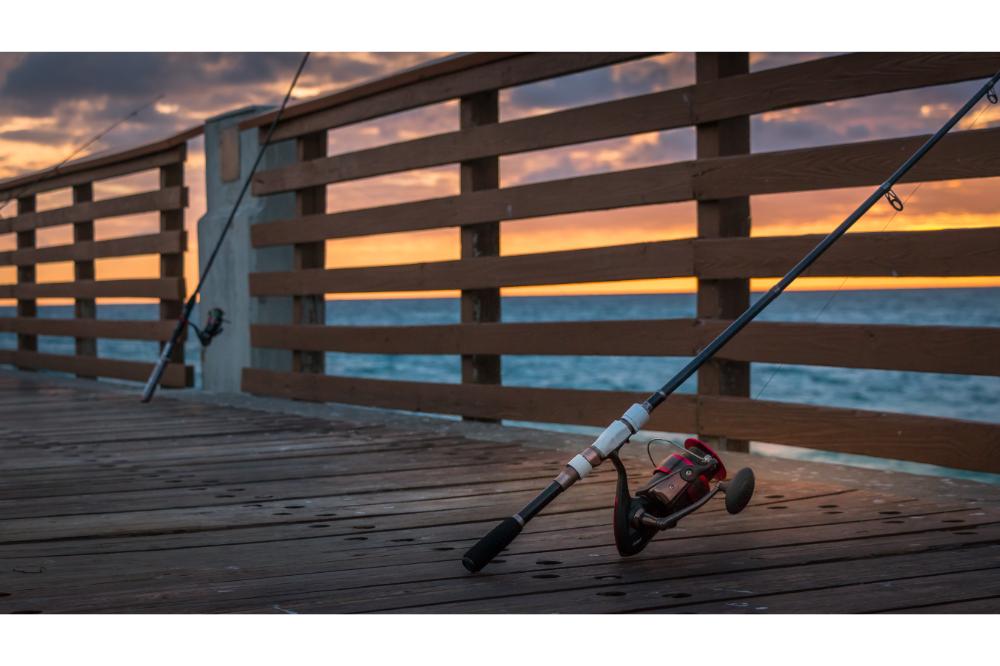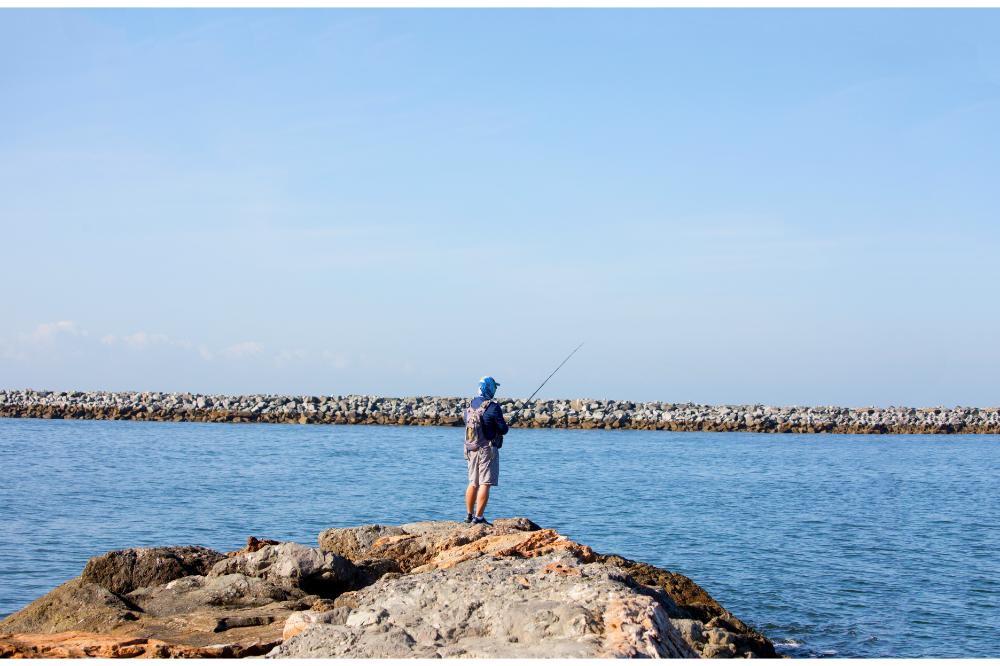
How to Find the Best fish holding structures on California beaches
If you love fishing on picturesque California beaches, finding the best fish holding structures can significantly enhance your angling experience. These natural or man-made underwater features serve as habitats for various fish species, supporting a vibrant marine life.
This article will guide you through the ins and outs of locating the most appealing fish havens, from rocky outcrops to kelp beds. We’ll also cover why these structures are critical for local anglers and marine ecology, how to use geolocation tools and tide charts to your advantage, and vital fish behaviors and migration patterns.
So, whether you’re a seasoned angler or a beginner, get ready to discover a new aspect of California beach fishing.
- Understanding fish holding structures
- Why fish holding structures are important on California beaches
- Benefits of fish holding structures
- Consequences of not having fish holding structures
- How to find fish holding structures on California beaches
- Popular fish holding structures to look out for on California beaches
- The best times to find fish at these structures
- Understanding fish behavior
- Monitoring fish migration patterns
- Conclusion
Understanding fish holding structures
To effectively find fish holding structures on California beaches, you first need to understand what they are. These structures are essentially physical formations where fish tend to gather. The type can vary greatly – from natural reefs and underwater vegetation to human-made structures like piers and jetties.
Why fish holding structures are important on California beaches
Fish holding structures on California beaches play a crucial role in sustaining the aquatic ecosystem. These structures, which include reefs, underwater rocks, pier pilings, and kelp beds, provide crucial habitats for different fish species. They serve as shelters from predators, feeding grounds, and breeding zones. Without these structures, many fish species would struggle to survive, causing irreversible changes in the coastal ecosystem.
Even recreational and commercial fishing activities are heavily influenced by these structures. Most fish species congregate around these structures, making them ideal fishing spots. Understanding their locations and functions can significantly enhance the success of your fishing trips to Californian beaches.
Additionally, these structures contribute to biodiversity in the coastline regions. They house not just fish, but plenty of other life forms—plants, crustaceans, mollusks, and more. In essence, these structures are the epicenter of marine life on the California coast. Knowing their importance can profoundly influence our efforts to preserve and protect our beaches. Now that we have a solid grasp on the role of these structures, let’s look at the many benefits they offer.
Benefits of fish holding structures
Fish holding structures come with immense benefits for anglers. They’re known for being productive fishing spots, improving catch rates significantly. Moreover, they bolster ecological diversity by providing a habitat for fish, which indirectly promotes a healthier underwater environment on California beaches.
Consequences of not having fish holding structures
Without fish holding structures, the diversity of marine life could decrease on California beaches. These structures provide essential habitats, contributing to the well-being and sustainability of our marine ecosystem. A lack of fish holding structures could disrupt fishing practices and even result in economic loss for local communities.

How to find fish holding structures on California beaches
Finding fish holding structures on California beaches is akin to treasure hunting – it’s exciting and rewarding. You’ll need a good pair of binoculars for scanning the shoreline. Start by observing the waves, as they can hint towards submerged structures. Areas where waves break early indicate shallow spots, which might reveal underwater rocks or sandbars. If you observe locations where waves do not break at all, it’s likely due to a deep channel, which are perfect fish holding structure.
Now, let’s talk about birds. Large gatherings of seabirds, especially pelicans, could mean a school of fish is present in the vicinity. These birds prey on the same fish you seek, hence their presence can be a key indicator of underwater structures.
Don’t forget the importance of human-made structures. Jetty walls and piers often possess under-the-radar substructures that encourage fish congregation. Often the bases of these structures, although not immediately visible, host an array of marine life and make for excellent fishing spots.
Lastly, something as simple as differing water color can hint towards a potential holding structure. Darker water spots usually indicate depth change or sea kelp that attracts numerous species. Muddy water could mean a creek or river mouth, another major fish magnet. By paying attention to these clues, you can make your fishing trips on California beaches more productive and enjoyable.
Using geolocation tools
Geolocation tools can be incredibly helpful when finding fish holding structures on California beaches. Using applications like Google Earth allows you to view the terrain from above, making it easier to locate potential structures. You can even save the coordinates of successful fishing spots for future reference. Remember, modern technology can be an angler’s best friend when used correctly.
Using tide charts
To further optimize your search for fish holding structures, tide charts are a reliable resource. These provide forecasts that can guide you to structures that are more exposed or submerged depending on the tide, increasing your chances of locating desired fish species.
Physical observations and signs
By observing physical signs, you can find fish holding structures. Look for groups of birds diving into the water; this often indicates fish activity.
Seaweed or floating debris may also signal structures beneath the surface. Surface breaks or whitewater can imply the presence of underwater rocks. Your visual observations are a viable method of spotting prime fishing spots on California beaches. It’s about being aware and attentive to your surroundings.
Popular fish holding structures to look out for on California beaches
When you’re scanning the California coast for potentially fruitful fish holding structures, a handful stand out as particularly reliable. Piers, for instance, are one of the most popular structures to find a variety of species. The pilings often host numerous fish taking cover from predators or looking for food.
Therefore, it’s no surprise that many anglers position themselves here for a good catch. Another common sight is the rocky outcrops and reefs that dot the coastline. Here, you can usually find species like rockfish, cabazon, or lingcod. In addition to these structures, kelp beds are a hidden oasis teeming with life. Many fishes find refuge in these dense underwater forests, making it an ideal spot for fishermen.
These are just a few examples of the commonly found fish holding structures on California beaches. Familiarizing yourself with these can make your fishing expeditions significantly more productive. Remember, a good angler understands not just what to catch, but where to catch it.
Rocky outcrops and reefs
Rocky outcrops and reefs scattered along the California coast serve as excellent fish holding structures. Fishers should take time to explore these areas as they commonly harbor a diverse variety of fish species. They’re natural hotspots for both bait fish and predator fish.
Pier pilings
Look out for pier pilings on California beaches when finding fish holding structures. These vertical supports for piers are often attractive to fish due to the relative safety they offer. Numerous species, including perch, find refuge around these underwater structures, making them the ideal spot for anglers.
Kelp beds
Kelp beds are excellent fish holding structures on California beaches. They’re marine habitats that provide protection and food for fish. To locate them, look out for dark patches in the water. Remember, these areas might house a diverse variety of fish species.
The best times to find fish at these structures
Timing is often crucial when looking for fish at these structures along California beaches. Fish are most active during dawn and dusk, commonly referred to as the ‘golden hours’ among fishing enthusiasts.
These are excellent times to find fish milling around holding structures. Keep in mind that tidal activity also influences fish movements, so combining these golden hours with high tide times could increase your success in spotting them at these structures. Practice patience and keep observing; remember, fishing is as much science as it is art.
Understanding fish behavior
Understanding fish behavior is a vital part of locating structures. For instance, some species prefer structures near the surface, while others dwell closer to the ocean floor. Knowing their habits will enhance your chances of successful fishing on California beaches.
Monitoring fish migration patterns
Tracking fish migration patterns can give you an edge in finding fish holding structures. During migration, various species like salmon gravitate towards specific structures.
Technology like fish finders makes it easier to observe these patterns on California beaches. Understanding these patterns can inform your selections and enhance your fishing experience.
Conclusion
Utilizing geolocation tools, observing physical signs, and understanding fish behavior can significantly help locate the best fish holding structures on California beaches.
With these skills, your beach fishing experience could be greatly enriched, making every visit to the California coastline rewarding.
